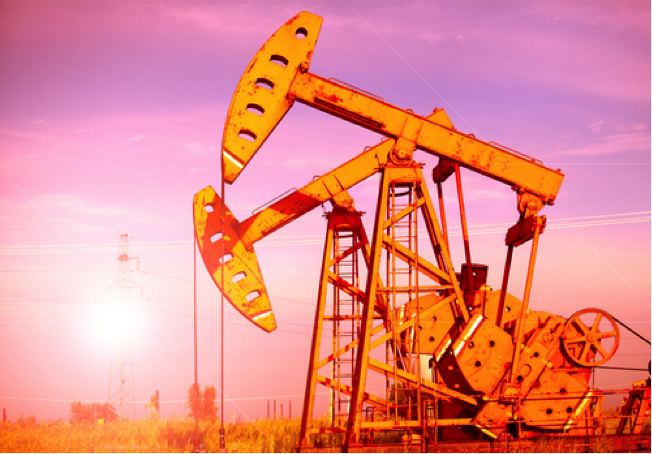
Crude oil from the Bakken (Williston Basin Sweet) is priced at a discount to benchmark oil that is roughly equal to the cost of transporting the oil to its destination. For example, Bakken light sweet crude headed to the east coast of the United States by rail last Friday brought a price to the producer of around $40 a barrel, based on a $59 per barrel price for Brent crude and a total transportation cost for the Bakken crude of $19 a barrel.
Another example: Shipping Bakken crude by pipeline to the Gulf coast cost $11 a barrel, and the price of benchmark Louisiana Light Sweet crude last Friday was $57 a barrel. That translates to a netback to the producer of $46 a barrel.
These economics are about to get tougher for producers as benchmark prices for West Texas Intermediate (WTI) and Brent continue to fall. Here is a look at how the price collapse could affect the Bakken’s top producers.
ALSO READ: Merrill Lynch’s Top MLP Picks for 2015
Whiting Petroleum Co. (NYSE: WLL) completed its acquisition of Kodiak Oil & Gas early in December, and as a result it is expected to become the Bakken’s largest producer at more than 107,000 barrels of oil a day from a total of 885,000 net acres in the Bakken play.
In the third quarter of 2014, the company produced 8.5 million barrels of oil, with all but about 1.6 million of those barrels coming from the Bakken shale play. Whiting reported that its average sales price per barrel fell from $97.69 in 2013 to $86.78 this year and that the average price per barrel of WTI on the NYMEX exchange fell from $105.82 a barrel a year ago to $97.21 in 2014.
Whiting’s costs totaled $48.06 a barrel in the third quarter, down from $51.59 in the third quarter of 2013. The company’s margin per barrel works out to $38.72 in the third quarter of this year, compared with $46.10 per barrel a year ago. Neither amount includes transportation costs.
Continental Resources Inc. (NYSE: CLR) is the largest leaseholder in the Bakken, with net acreage of 1.2 million acres. The company’s average daily production of crude oil totaled 127,788 barrels a day in the third quarter, up by about 27% year-over-year. The average price per barrel, however, dropped from $98.02 to $85.49.
Production costs in the third quarter of 2014 totaled $37.19, which includes production expenses of $5.80 a barrel, DD&A of $21.65 a barrel, G&A of $1.82, non-cash equity compensation cost of $0.82 a barrel and production taxes of 8.3%, which works out to around $7.10 a barrel. Margin per barrel works out to $48.30.
ALSO READ: Outlook for Oilfield Services in 2015
Hess Corp. (NYSE: HES) has shed all its refining operations and is now a pure-play exploration and production company, with 640,000 net acres in the Bakken play. Hess produced 63,000 of its total oil production of 74,000 barrels a day in the Bakken play. The company’s average selling price per onshore U.S. barrel came to $86.07, compared with $96.01 a year ago.
Cash operating costs totaled $21.76 a barrel in the third quarter, and DD&A costs came in at $28.48, for a total production cost of $50.24 per barrel. Margin per barrel totaled $35.83.
EOG Resources Inc. (NYSE: EOG) holds a core total of 110,000 net acres in the Bakken play. The company reports production on the basis of oil and condensates added together and does not differentiate among its U.S. fields. The company reported crude oil and condensate U.S. production of 293,500 barrels a day in the third quarter at an average selling price of $97.33.
Total operating and other expenses came to $31.93, which includes $0.88 per barrel in interest expense. EOG’s margin, then, came to $65.40 a barrel.
Statoil ASA (NYSE: STO) is Norway’s state-controlled integrated energy firm, and the company holds leases on 355,000 net acres in the Bakken play. Production totals around 50,000 barrels a day, and the company received $87.40 per barrel for its international (non-North Sea) production in the third quarter. As a percentage of international production, U.S. barrels are less than a third of Statoil’s total equity production of 557,000 barrels a day. Production costs per U.S. barrel are not available.
Another factor influencing Bakken producers is debt. Excluding Statoil, long-term debt levels and interest expense at the end of the third quarter were:
- EOG: $5.9 billion in long-term debt; interest expense of $49.7 million
- Hess: $5.9 billion debt; $75 million interest expense
- Continental: $4.7 billion debt; $73.9 million interest expense
- Whiting: $2.75 billion debt; $39.6 million interest expense
These are not particularly high levels for EOG, Hess or Continental, which have market caps of $56.4 billion, $50.4 billion and $22.3 billion, respectively. The much smaller Whiting, with a market cap of $4 billion, may be pushing the envelope.
ALSO READ: 5 Cleantech Stocks With Upside Potential of 60% or More in 2015
Thank you for reading! Have some feedback for us?
Contact the 24/7 Wall St. editorial team.




